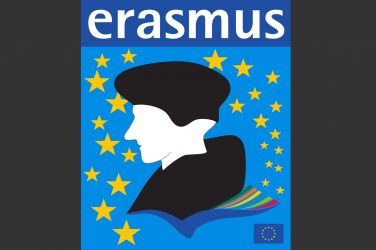The photo series Wide Tube brings us the feelings and subtle emotions behind public transport in a big European city.
Through a captivating collection of photographs, Rocío Pérez Fernández shows us the inner realities of commuting in a big European city.
I suppose that every European city that can be crossed through an underground system develops, in that transportation space, an extension to the everyday life that takes place on its surface. That is why, for someone who enjoys watching and capturing moments of the ordinary, the underground is a perfect context for the quiet eye.

I have visited quite a few cities around Europe, but only lived in two of them. I spent most of my life in Barcelona and seven years ago I moved to London.
At the time, I found the urban experience of the tube very fascinating and particular in comparison with Barcelona. The shapes and lines, the colours, the efficiency of movements, the mechanical choreographies, the moods and rhythms, the wide range of different characters performing and watching, that electricity among them… It felt like the inputs were multiplied by a hundred. London is a restless and vivid urban space. While I had to wait for my destination, I almost couldn’t concentrate on reading or listening to music. Just watching my surroundings would push my thoughts to travel so fast, like the train that was transporting me and the other passengers.
There may be other waiting rooms where we use time to worry about our everyday life concerns. Places where we, aware of the other eyes watching, play as masters of acting the assumed routine of self-representation. But the underground space adds something to this; it encloses the tempers and rhythms of the city and its creatures like a widespread jail.
Two years ago, when I was about to finish a degree in photography, I decided that my final project would focus on the underground space and the interactions among its passengers. Many great photographers served as an inspiration to me: Walker Evans, Tom Wood, Nobuyoshi Araki, George Georgiou, Luc Delahaye, David Solomons, Bruce Davison… Through their own perspectives, they all photographed the setting of the public space that we share while travelling. I wanted to have a go as well and ended up with ‘Wide Tube’, a small book series that shows my perceptions of the particularities of commuting in London.
I guess that I have a certain melancholic preference and that could be the reason for the atmosphere of the series. There are many situations when the ambience of a wagon feels as if it has been transformed into that of a busy pub, for example. However, I edited those moments out of this observation. Likewise, responding to that inclination towards melancholy, I chose to photograph with a film camera rather than with a digital one (though I slightly edited the images digitally afterwards).
The choice of the main lens for this project, the 15mm wide-angle, was crucial for the aesthetics I had in mind. Its peculiar distortion connects with the curves and lines of the architecture of the tube. It also helped me to create flowing compositions and enclosed whole scenes and games of gazes between passengers. Not missing, for instance, the reactions of those who thought they were not in the frame. It is almost as if this lens could include me inside the photograph, too. In the beginning, I was very shy and concerned about how people would react to my intrusion. I started with a phone camera hiding my intentions and tried other ways. But I ended up using a bulky analogue camera. It felt like that was a more open, candid and sincere way of going about it. Like this, I interacted silently with my subjects; a few times they talked to me, but in general they reacted to my camera just like they would react to the thousands of CCTV cameras around the city.
Eventually, this project helped me to learn a bit more about human interaction in urban spaces. The tube is a public space that many times we want to transform into our private waiting room. For example, when travelling ‘alone’ most of us read, play with our electronic gadgets or listen to music, we can eat our quick lunch and some can even finish off their make up. All this is done while pretending to ignore the fact that someone sitting opposite or next to us can see what we are doing. The rule is to politely pretend a lack of interest in what the other passenger does, given that we want to feel anonymous in a big city. But the contradiction is that, when you observe methodically, you discover some sort of contained anxiety or urge to communicate. Commuters are aware of their audience and try to show their best side whilst curiously staring at the other performers. Sometimes something breaks that loud silence, an exchange of smiles for instance, and when that happens, it feels like a great spark of electricity.
Cover photo: Rocío Pérez Fernández (‘Wide Tube’ series)





